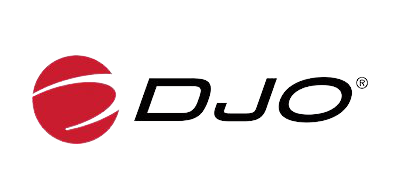Report Summary
Eternity Insights has published a new study on Global Waste-to-Energy Plants Market focusing on key segments by technology, waste type, capacity, application and region. This deep dive research report highlights the market and competitive intelligence across the key segments of the market. The report also considers the impact of COVID-19 on the global Waste-to-Energy Plants Market.
The report considers 2019-2022 as historic period, 2023 as base year, and 2024-2034 as forecast period. The report includes quantitative analysis of the market supported by the market drivers, challenges, and trends to accurately map the market scenario and competition. Moreover, key insights related to market having direct impact on the market will also be covered.
Waste-to-Energy Plants Market report is based on robust research methodology designed using blend of research ap-proaches developed using secondary/desk research and validated through the primary research and expert insights. Eternity Insights also uses paid databases such as FACIVA, Hoovers, and other bench-marking and forecasting tools to provide accurate statistical analysis of supply and demand trends.
Global Waste-to-Energy Plants Market Size, 2019-2034 (USD Million)

To learn more about this report
Global Waste-to-Energy Plants Market Segmentation:
Waste-to-Energy Plants Market, By Technology
- Thermal
- Biological
- Technology
- Other
Waste-to-Energy Plants Market, By Waste Type
- Municipal Solid Waste
- Industrial Waste
- Agricultural Waste
- Others
Waste-to-Energy Plants Market, By Capacity
Waste-to-Energy Plants Market, By Application
- Electricity Generation
- Heat Generation
- Combined Heat and Power
- Others

To learn more about this report
Geographically, the market is categorized in to five regions as North America, Europe, Asia Pacific, Latin America, and the Middle East and Africa. North America region dominates the global Waste-to-Energy Plants market in terms of demand generation. The Waste-to-Energy Plants market in Asia Pacific region is expected to grow at significantly high growth rate. The regional market is further sub-segmented and analyzed at granular level across key countries. The report will include market size and forecast for Waste-to-Energy Plants market for below listed coun-tries across each region.
North America (U.S. and Canada), Europe (Germany, France, Italy, UK, Spain, and Rest of Europe), Asia Pacific (China, India, Japan, Australia, and Rest of Asia Pacific region); Latin America (Brazil, Mexico, and rest of the Latin America); Middle East and Africa (GCC, South Africa, and Rest of the Middle East and Africa).
Global Waste-to-Energy Plants Market Taxonomy:

To learn more about this report
Global Waste-to-Energy Plants Market Competitive Landscape
The global Waste-to-Energy Plants market analysis report covers detailed analysis of competitive scenario across globe. The report includes profiles of leading players covering below details
- Company Overview
- Financial Analysis
- Product Portfolio Analysis
- Strategic Overview
- SWOT Analysis
List of Companies Profiled in the Report:
- Covanta Holding Corporation
- Veolia Environnement S.A.
- Suez Environnement Company
- Hitachi Zosen Corporation
- Babcock & Wilcox Enterprises, Inc.
- China Everbright International Limited
- Keppel Seghers
- Ramboll Group A/S
- Mitsubishi Heavy Industries Environmental & Chemical Engineering Co., Ltd.
- Wheelabrator Technologies Inc.
- Abu Dhabi National Energy Company PJSC (TAQA)
Market Segmentation
| Report Attributes |
Details |
| The market size value in 2023 |
USD XX.XX Million |
| CAGR (2024 - 2034) |
XX.XX % |
| The Revenue forecast in 2034 |
USD XX.XX Million |
| Base year for estimation |
2023 |
| Historical data |
2019-2022 |
| Forecast period |
2024-2034 |
| Quantitative units |
- Revenue in USD Million
- CAGR from 2024 to 2034
|
| Report Coverage |
Revenue forecast, company ranking, competitive landscape, growth factors, and trends |
| Segments Covered |
By technology Outlook, Application Outlook, Regional Outlook |
| By Technology Outlook |
Thermal, Biological, Physical |
| By Application Outlook |
Electricity Generation, Heat Generation, Combined Heat and Power, Others |
| Regional scope |
North America, Europe, Asia Pacific, Latin America, Middle East & Africa |
| Country scope |
U.S., Canada, U.K., Germany, France, BENELUX, China, India, Japan, South Korea, Brazil, Saudi Arabia, UAE, Turkey |
| Key companies profiled |
Covanta Holding Corporation, Veolia Environnement S.A., Suez Environnement Company, Hitachi Zosen Corporation, Babcock & Wilcox Enterprises, Inc., China Everbright International Limited, Keppel Seghers, Ramboll Group A/S, Mitsubishi Heavy Industries Environmental & Chemical Engineering Co., Ltd., Wheelabrator Technologies Inc., Abu Dhabi National Energy Company PJSC (TAQA) |
| Customization Available |
Yes, the report can be tailored to meet your specific requirements. |
Key Benefits to the Stakeholders
- Qualitative and quantitative analysis of the market based on segmentation involving both economic as well as non-economic factors
- Provision of market value (USD Billion) and volume (Tons) data for each segment and sub-segment
- Indicates the region and segment that is expected to witness the fastest growth as well as to dominate the market
- Analysis by geography highlighting the consumption of the product/service in the region as well as indicating the factors that are affecting the market within each region
- Competitive landscape which incorporates the market ranking of the major players, along with new service/product launches, partnerships, business expansions and acquisitions in the past five years of companies profiled
- Extensive company profiles comprising of company overview, company insights, product benchmarking and SWOT analysis for the major market players
- The current as well as the future market outlook of the industry with respect to recent developments (which involve growth opportunities and drivers as well as challenges and restraints of both emerging as well as developed regions
- Includes an in-depth analysis of the market of various perspectives through Porter’s five forces analysis
- Provides insight into the market through Value Chain
- Market dynamics scenario, along with growth opportunities of the market in the years to come
Table Of Contents
Table of Contents
1 Report Overview
1.1 Research Scope
1.2 Major Manufacturers Covered in This Report
1.3 Market Segment by Type
1.3.1 Global Waste-to-Energy Plants Market Size Growth Rate by Type (2019-2025)
1.3.2 Thermal
1.3.3 Biological
1.4 Market Segment by Application
1.4.1 Global Waste-to-Energy Plants Market Share by Application (2019-2025)
1.4.2 Energy production
1.4.3 Waste disposal
1.5 Study Objectives
1.6 Years Considered
2 Global Growth Trends
2.1 Production and Capacity Analysis
2.1.1 Global Waste-to-Energy Plants Production Value 2014-2025
2.1.2 Global Waste-to-Energy Plants Production 2014-2025
2.1.3 Global Waste-to-Energy Plants Capacity 2014-2025
2.1.4 Global Waste-to-Energy Plants Marketing Pricing and Trends
2.2 Key Producers Growth Rate (CAGR) 2019-2025
2.2.1 Global Waste-to-Energy Plants Market Size CAGR of Key Regions
2.2.2 Global Waste-to-Energy Plants Market Share of Key Regions
2.3 Industry Trends
2.3.1 Market Top Trends
2.3.2 Market Drivers
3 Market Share by Manufacturers
3.1 Capacity and Production by Manufacturers
3.1.1 Global Waste-to-Energy Plants Capacity by Manufacturers
3.1.2 Global Waste-to-Energy Plants Production by Manufacturers
3.2 Revenue by Manufacturers
3.2.1 Waste-to-Energy Plants Revenue by Manufacturers (2014-2019)
3.2.2 Waste-to-Energy Plants Revenue Share by Manufacturers (2014-2019)
3.2.3 Global Waste-to-Energy Plants Market Concentration Ratio (CR5 and HHI)
3.3 Waste-to-Energy Plants Price by Manufacturers
3.4 Key Manufacturers Waste-to-Energy Plants Plants/Factories Distribution and Area Served
3.5 Date of Key Manufacturers Enter into Waste-to-Energy Plants Market
3.6 Key Manufacturers Waste-to-Energy Plants Product Offered
3.7 Mergers & Acquisitions, Expansion Plans
4 Market Size by Type
4.1 Production and Production Value for Each Type
4.1.1 Thermal Production and Production Value (2014-2019)
4.1.2 Biological Production and Production Value (2014-2019)
4.2 Global Waste-to-Energy Plants Production Market Share by Type
4.3 Global Waste-to-Energy Plants Production Value Market Share by Type
4.4 Waste-to-Energy Plants Ex-factory Price by Type
5 Market Size by Application
5.1 Overview
5.2 Global Waste-to-Energy Plants Consumption by Application
6 Production by Regions
6.1 Global Waste-to-Energy Plants Production (History Data) by Regions 2014-2019
6.2 Global Waste-to-Energy Plants Production Value (History Data) by Regions
6.3 United States
6.3.1 United States Waste-to-Energy Plants Production Growth Rate 2014-2019
6.3.2 United States Waste-to-Energy Plants Production Value Growth Rate 2014-2019
6.3.3 Key Players in United States
6.3.4 United States Waste-to-Energy Plants Import & Export
6.4 European Union
6.4.1 European Union Waste-to-Energy Plants Production Growth Rate 2014-2019
6.4.2 European Union Waste-to-Energy Plants Production Value Growth Rate 2014-2019
6.4.3 Key Players in European Union
6.4.4 European Union Waste-to-Energy Plants Import & Export
6.5 China
6.5.1 China Waste-to-Energy Plants Production Growth Rate 2014-2019
6.5.2 China Waste-to-Energy Plants Production Value Growth Rate 2014-2019
6.5.3 Key Players in China
6.5.4 China Waste-to-Energy Plants Import & Export
6.6 Rest of World
6.6.1 Japan
6.6.2 Korea
6.6.3 India
6.6.4 Southeast Asia
7 Waste-to-Energy Plants Consumption by Regions
7.1 Global Waste-to-Energy Plants Consumption (History Data) by Regions
7.2 United States
7.2.1 United States Waste-to-Energy Plants Consumption by Type
7.2.2 United States Waste-to-Energy Plants Consumption by Application
7.3 European Union
7.3.1 European Union Waste-to-Energy Plants Consumption by Type
7.3.2 European Union Waste-to-Energy Plants Consumption by Application
7.4 China
7.4.1 China Waste-to-Energy Plants Consumption by Type
7.4.2 China Waste-to-Energy Plants Consumption by Application
7.5 Rest of World
7.5.1 Rest of World Waste-to-Energy Plants Consumption by Type
7.5.2 Rest of World Waste-to-Energy Plants Consumption by Application
7.5.1 Japan
7.5.2 Korea
7.5.3 India
7.5.4 Southeast Asia
8 Company Profiles
8.1 China Everbright
8.1.1 China Everbright Company Details
8.1.2 Company Description and Business Overview
8.1.3 Production and Revenue of Waste-to-Energy Plants
8.1.4 Waste-to-Energy Plants Product Introduction
8.1.5 China Everbright Recent Development
8.2 China Energy Conservation and Environment Protection (CECEC)
8.2.1 China Energy Conservation and Environment Protection (CECEC) Company Details
8.2.2 Company Description and Business Overview
8.2.3 Production and Revenue of Waste-to-Energy Plants
8.2.4 Waste-to-Energy Plants Product Introduction
8.2.5 China Energy Conservation and Environment Protection (CECEC) Recent Development
8.3 China Renewable Energy (CRE)
8.3.1 China Renewable Energy (CRE) Company Details
8.3.2 Company Description and Business Overview
8.3.3 Production and Revenue of Waste-to-Energy Plants
8.3.4 Waste-to-Energy Plants Product Introduction
8.3.5 China Renewable Energy (CRE) Recent Development
9 Market Forecast
9.1 Global Market Size Forecast
9.1.1 Global Waste-to-Energy Plants Capacity, Production Forecast 2019-2025
9.1.2 Global Waste-to-Energy Plants Production Value Forecast 2019-2025
9.2 Market Forecast by Regions
9.2.1 Global Waste-to-Energy Plants Production and Value Forecast by Regions 2019-2025
9.2.2 Global Waste-to-Energy Plants Consumption Forecast by Regions 2019-2025
9.3 United States
9.3.1 Production and Value Forecast in United States
9.3.2 Consumption Forecast in United States
9.4 European Union
9.4.1 Production and Value Forecast in European Union
9.4.2 Consumption Forecast in European Union
9.5 China
9.5.1 Production and Value Forecast in China
9.5.2 Consumption Forecast in China
9.6 Rest of World
9.6.1 Japan
9.6.2 Korea
9.6.3 India
9.6.4 Southeast Asia
9.7 Forecast by Type
9.7.1 Global Waste-to-Energy Plants Production Forecast by Type
9.7.2 Global Waste-to-Energy Plants Production Value Forecast by Type
9.8 Consumption Forecast by Application
10 Value Chain and Sales Channels Analysis
10.1 Value Chain Analysis
10.2 Sales Channels Analysis
10.2.1 Waste-to-Energy Plants Sales Channels
10.2.2 Waste-to-Energy Plants Distributors
10.3 Waste-to-Energy Plants Customers
11 Opportunities & Challenges, Threat and Affecting Factors
11.1 Market Opportunities
11.2 Market Challenges
11.3 Porter's Five Forces Analysis
12 Key Findings
13 Appendix
13.1 Research Methodology
13.1.1 Methodology/Research Approach
13.1.1.1 Research Programs/Design
13.1.1.2 Market Size Estimation
13.1.1.3 Market Breakdown and Data Triangulation
13.1.2 Data Source
13.1.2.1 Secondary Sources
13.1.2.2 Primary Sources
13.2 Author Details
13.3 Disclaimer












